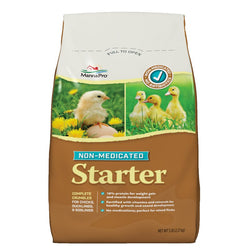All about Infectious Synovitis disease
Back to blog
Harmful bacteria are the cause of many chicken (and human) diseases. In the case of Infectious Synovitis, the most recognizable sign of the disease is lameness, swollen legs, or legs or feet that are hot to the touch. Infectious Synovitis is a serious disease that is rare--thankfully!--because of today's standards of monitoring of commercial flocks and hatcheries. You can read on to find out more:
Infectious Synovitis Also called
Mycoplasmosis (one form), MS, big hock disease, enlarged hocks
Prevalence-
Once common in commercial flocks of "broilers" (chickens raised for meat), now quite rare due to NPIP monitoring. Low mortality, however it often occurs as a concurrent infection, so the other infection may cause death. Because survivors can become carriers, culling is usually recommended.
Signs
General signs -
Lack of appetite, lethargy, fluffed up feathers. Slow growth, pale or blue comb, green droppings with lots of white urates. Emaciation.
Cardinal or diagnostic signs -
Lameness, swollen legs and/or feet that are hot to the touch.
Cause/s
Mycoplasma synoviae bacteria, which often appears as a secondary infection. Occasionally caused by E. coli bacteria.
Communicability
Yes. Airborne, or can be passed from hen to chick in ovo.
Communicability to humans
No
Incubation period
10 - 20 days
Latent
Yes. Chickens who survive and recover may be carriers.
Home treatment and/or prevention
Prevention: Practice good biosecurity. Acquire good stock from trusted sources. Practice quarantine with new birds. There is a vaccine. Treatment: Antibiotics may be used, but which and how effective they are will depend on the bacteria causing the infection.
Veterinary care
Consult a vet to get a firm diagnosis and appropriate antibiotics
Recovery
Survivors can become carriers and spread the disease to other flocks. Culling is recommended.
Other conditions, illnesses and/or diseases with similar signs:
Leg injury, Marek's Disease
Infectious Synovitis Also called
Mycoplasmosis (one form), MS, big hock disease, enlarged hocks
Prevalence-
Once common in commercial flocks of "broilers" (chickens raised for meat), now quite rare due to NPIP monitoring. Low mortality, however it often occurs as a concurrent infection, so the other infection may cause death. Because survivors can become carriers, culling is usually recommended.
Signs
General signs -
Lack of appetite, lethargy, fluffed up feathers. Slow growth, pale or blue comb, green droppings with lots of white urates. Emaciation.
Cardinal or diagnostic signs -
Lameness, swollen legs and/or feet that are hot to the touch.
Cause/s
Mycoplasma synoviae bacteria, which often appears as a secondary infection. Occasionally caused by E. coli bacteria.
Communicability
Yes. Airborne, or can be passed from hen to chick in ovo.
Communicability to humans
No
Incubation period
10 - 20 days
Latent
Yes. Chickens who survive and recover may be carriers.
Home treatment and/or prevention
Prevention: Practice good biosecurity. Acquire good stock from trusted sources. Practice quarantine with new birds. There is a vaccine. Treatment: Antibiotics may be used, but which and how effective they are will depend on the bacteria causing the infection.
Veterinary care
Consult a vet to get a firm diagnosis and appropriate antibiotics
Recovery
Survivors can become carriers and spread the disease to other flocks. Culling is recommended.
Other conditions, illnesses and/or diseases with similar signs:
Leg injury, Marek's Disease











